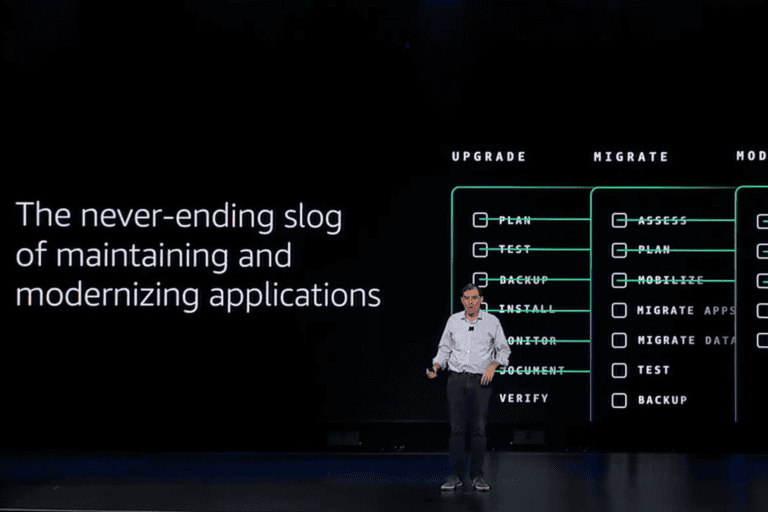If it’s up to AWS, organizations will soon have no more excuses for not converting legacy workloads to more modern variants. Today, it announced a preview of new features in Amazon Q Developer that should take care of this. AWS promises a lot: among other things, AWS talks about savings of 40 percent and migration paths that take hours instead of weeks.
Amazon Q Developer is AWS’ GenAI assistant for software development. However, many organizations don’t just need an assistant when developing new software. They also have a lot of existing, not infrequently outdated software running in their environments. That software typically does not run in the cloud. That’s not desirable for AWS, of course, because that company wants to get as much software toward the cloud as possible and, in general, as modernize it as much as possible.
For customers, however, it is quite a big deal to part with the existing software. This may be because the project is so big that they would rather just not get started. It could also be that they don’t think it’s possible, that it will take too long, or simply because they haven’t yet realized the potential profit of doing it. Furthermore, organizations also have to deal with the owners of the various software stacks, who often aren’t eager to do things completely differently either. All of this is aside from whether it is always a good idea from a business perspective to part with existing software. But we won’t get into that here.
AWS means business with Amazon Q Developer
Today, AWS is announcing the preview of new Amazon Q Developer capabilities that should allow customers to modernize faster. The company is tackling the challenge head-on. It has identified some of the key problem areas (viewed from AWS’s perspective, of course) and got to work. With today’s new capabilities, it is tackling .NET environments, VMware workloads and mainframes. We briefly walk through these three components below.
From .NET Framework to .NET on Linux
Organizations that are and have been working with .NET generally do well not to use .NET Framework anymore. It is not just us who say that, Microsoft itself says so too. For the majority of applications, .NET on Linux (or .NET Core) is by far the better choice. This is because that is cross-platform, whereas .NET Framework is limited to Microsoft environments. Furthermore, .NET on Linux is also ideally suited for use in containers, something .NET Framework is not really (even though it does function in Microsoft containers).
So to help organizations move to the more modern version of .NET, AWS has now built specific functionality into Amazon Q Developer. AWS claims that using this GenAI assistant makes this process up to four times faster than without it. This also results in sharp reductions in licensing costs, according to AWS. The gains can be as much as 40 percent, according to the company.
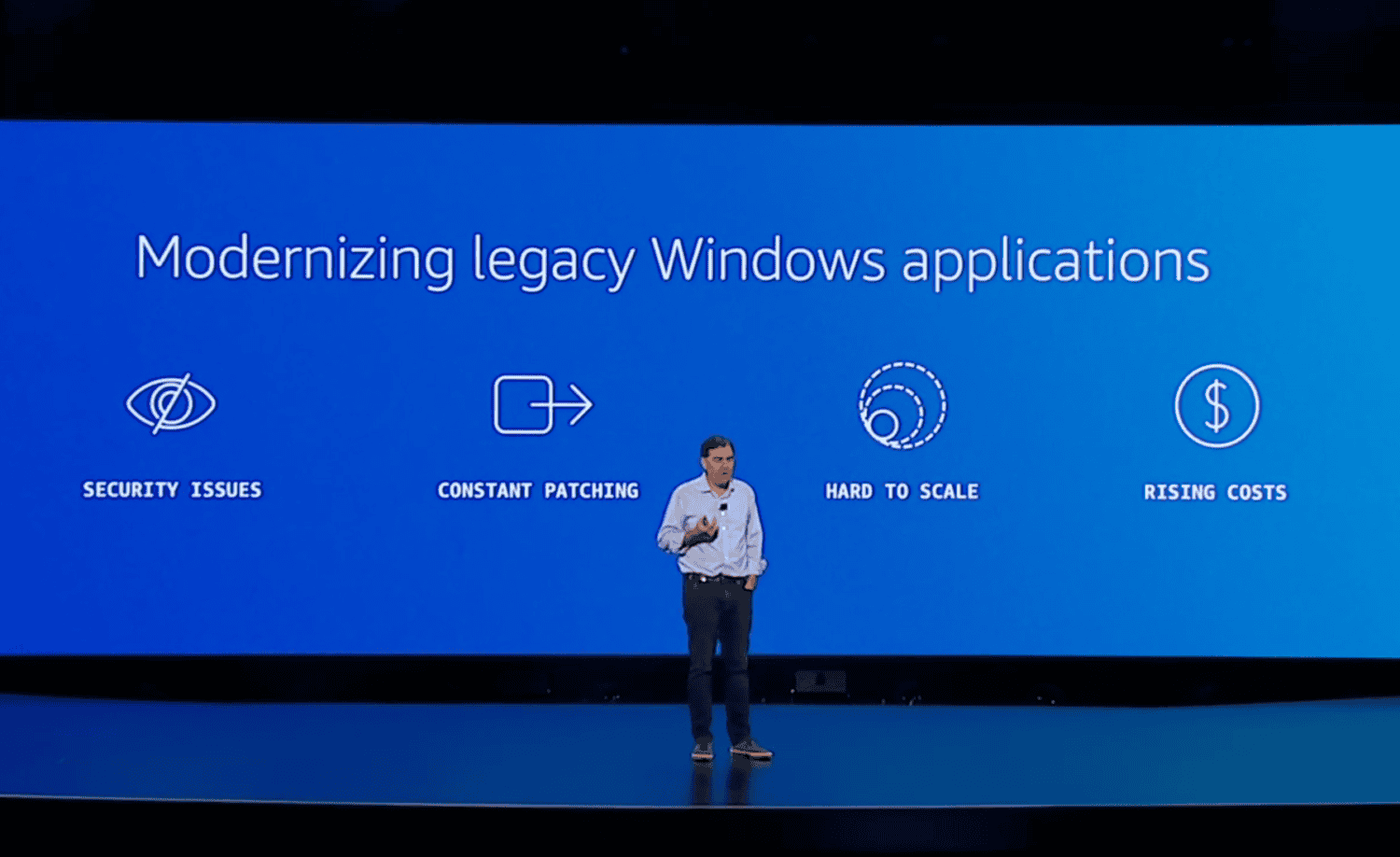
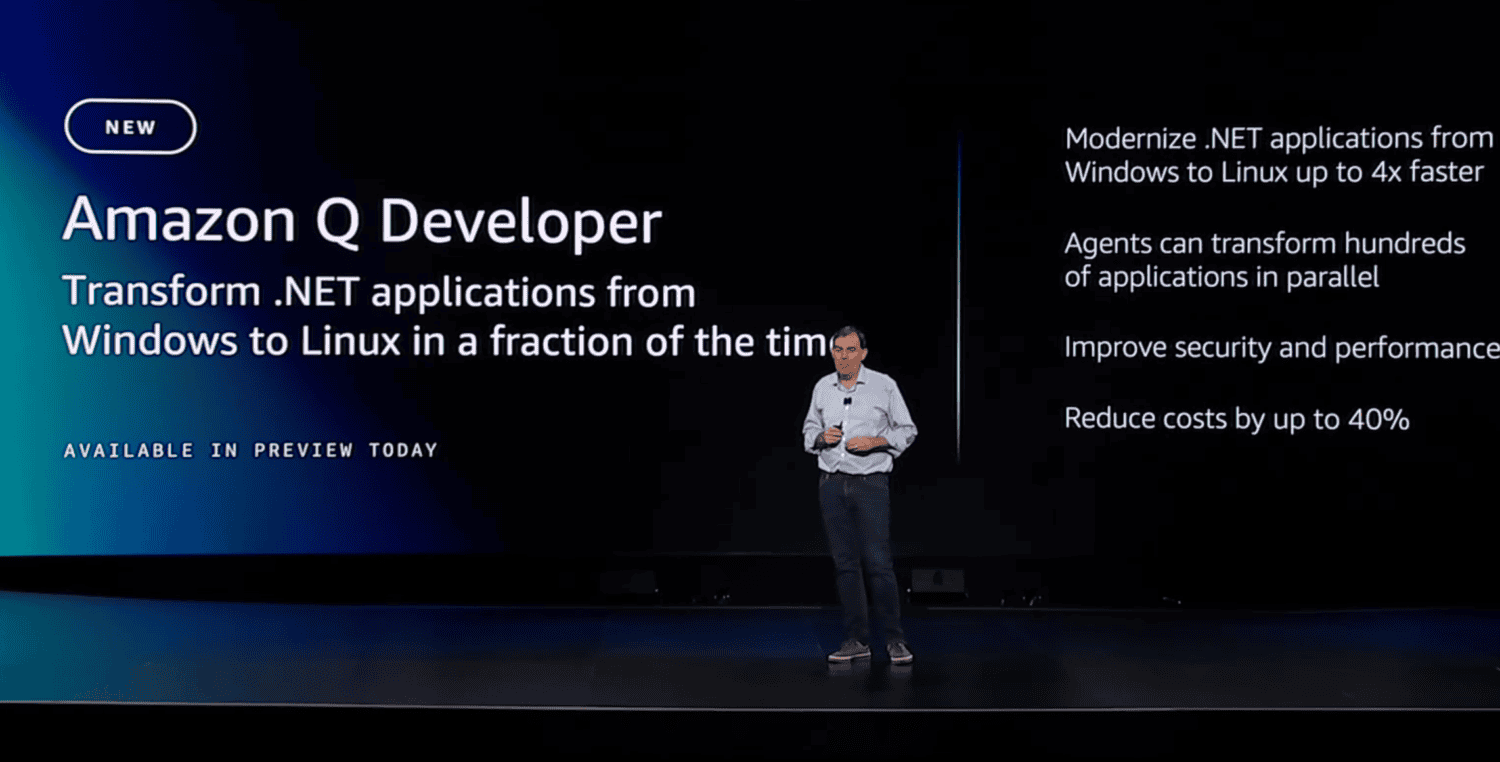
AWS also wanted to make the new functionality very simple to use too. Developers just need to press the “Transform” button within their IDE in the AWS Toolkit and indicate the file they want to modernize. Amazon Q does the rest. It deploys agents to get determine which components need upgrading. Then the agents draw up a plan, provide fixes and execute the plan. This includes things like upgrading existing code and config files and generating new files it needs. If a build fails, the agents fix the errors. At the end of the process, the developer gets to see a summary.
Transferring VMware workloads to AWS
The second part of the new additions to Amazon Q Developer is also aimed at something many organizations have, namely VMware workloads still running on-premises. For organizations looking to move to the public cloud, those workloads are a reason to stay in and keep their own data center. Amazon Q has a solution in store for customers in this regard as well.
AWS echoes the promise it made above, and also states that migrating VMware workloads is easy and fast with Amazon Q Developer. Customers (and partners who want to do this for and with customers) no longer have to spend a very long time evaluating which workloads can be safely migrated. Nor, according to AWS, do they have to worry about the underlying infrastructure and whether it is adequate from a scalability and security perspective.
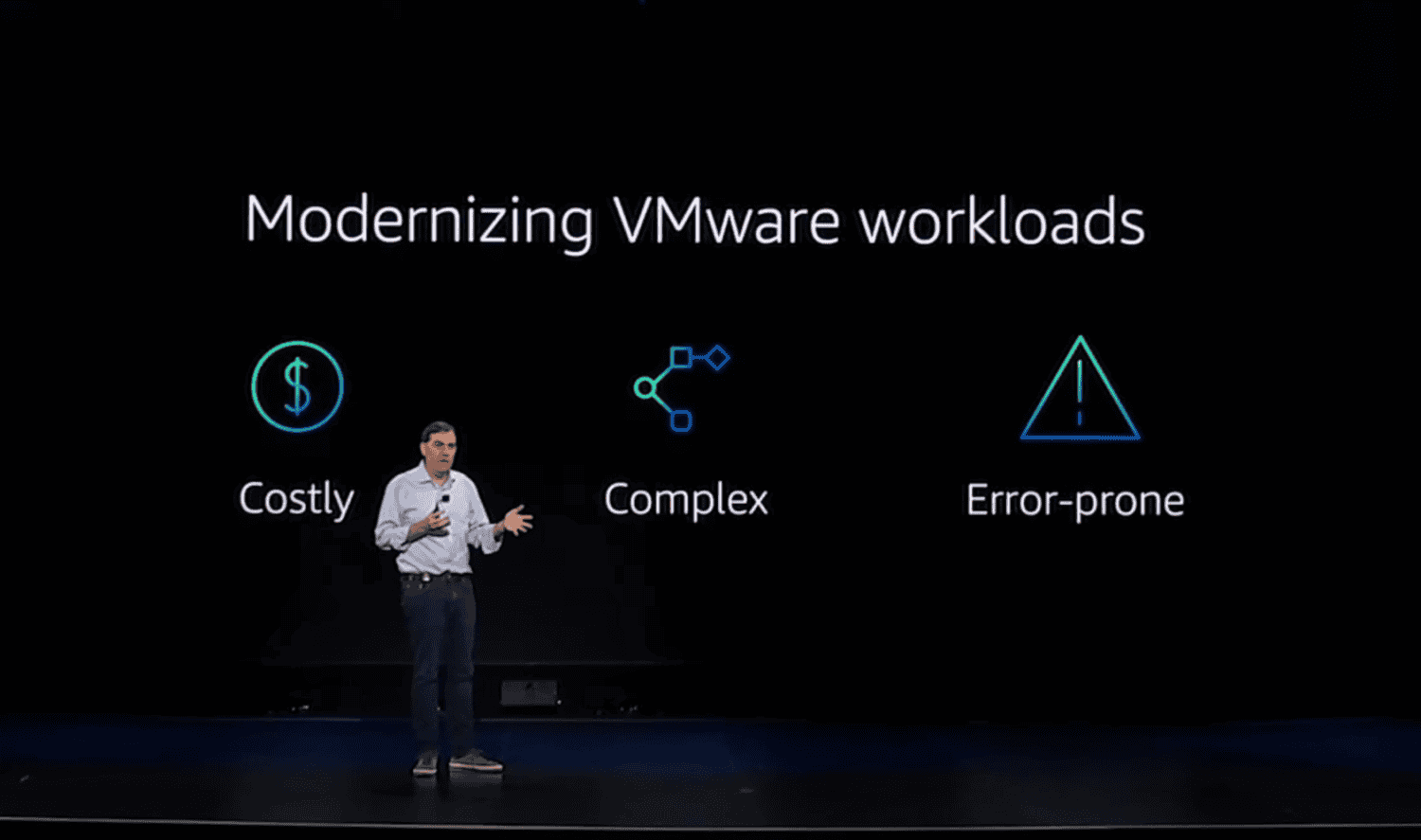
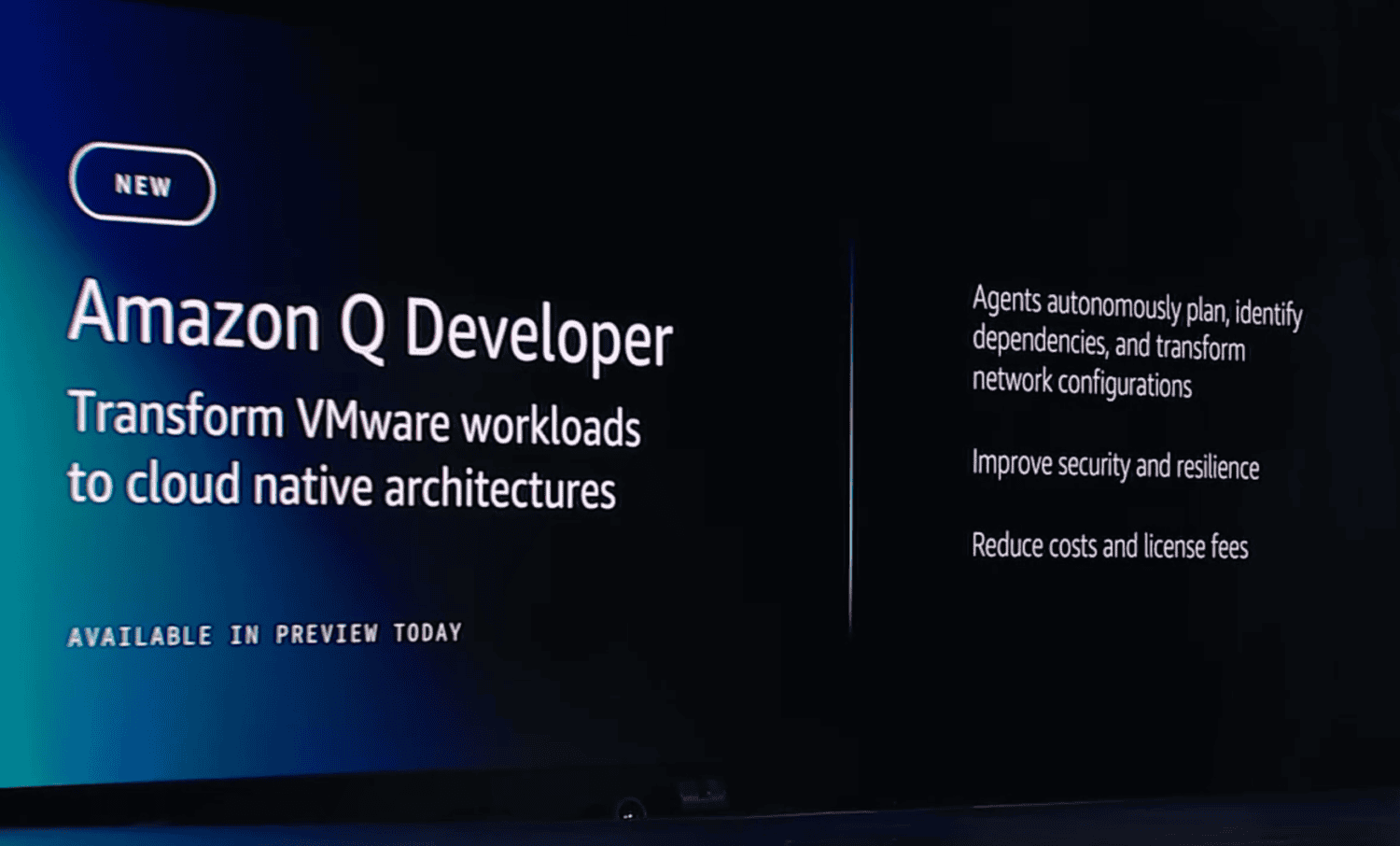
Amazon Q deploys agents that fully automatically identify dependencies and create a plan based on them. The migration itself then takes place in waves, doing justice to the dependencies found by the agents. AWS promises that this can happen in minutes, where now it can take weeks. The agents even convert network configurations for the applications from on-premises to cloud configurations. Again, AWS claims significant time savings, from weeks to hours.
Modernizing mainframes
Speaking of hard-to-break ties to on-premises data centers, there is nothing like mainframes. You could see that as the anchor that keeps certain organizations (a mainframe is not for everyone) firmly in the on-premises world. To be fair, mainframes are very complex systems. You don’t just pick those up and then put them somewhere in a cloud environment. By comparison, migrating VMware workloads is child’s play. Code must be analyzed, documentation reviewed and well planned, not to mention application refactoring.
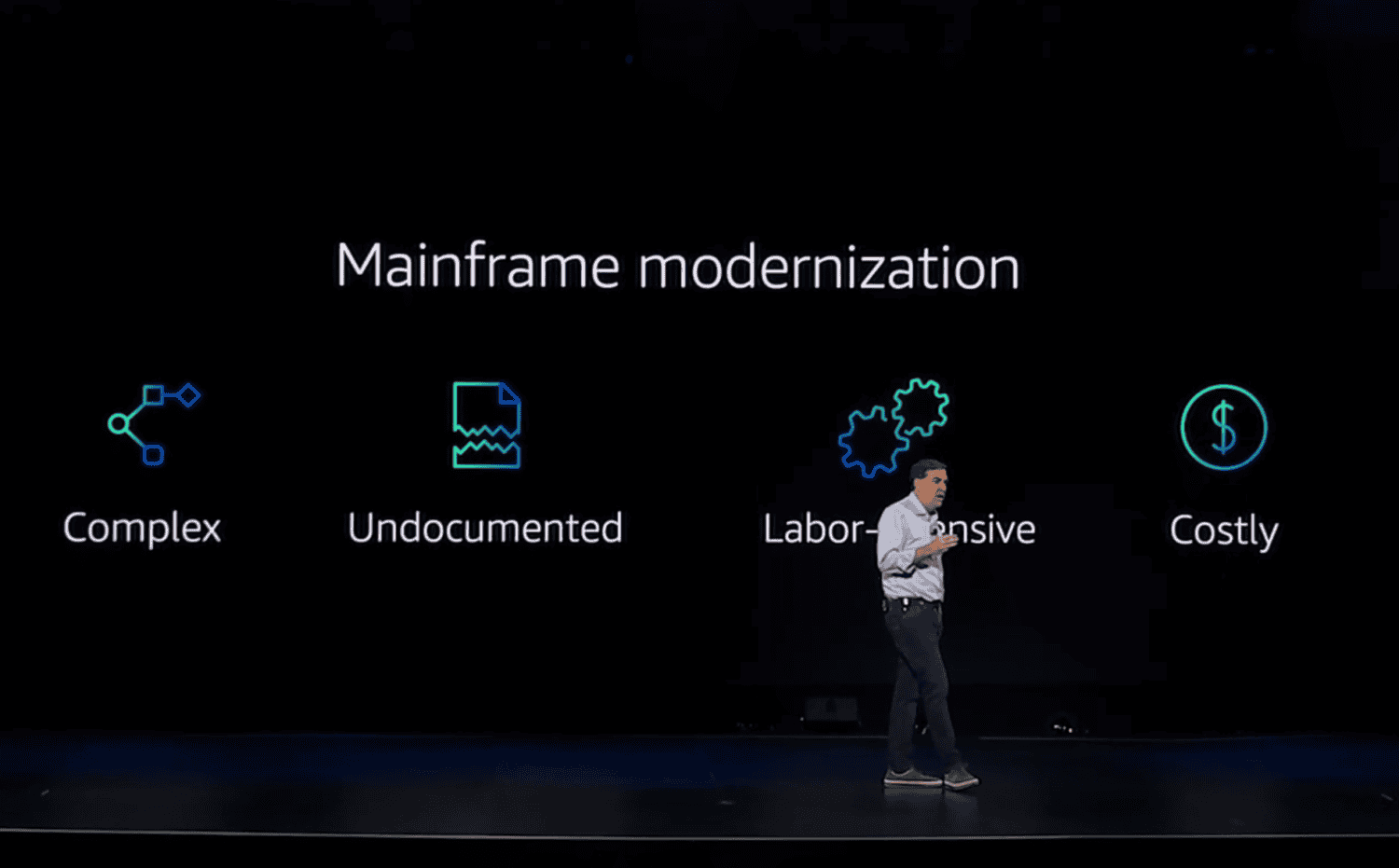
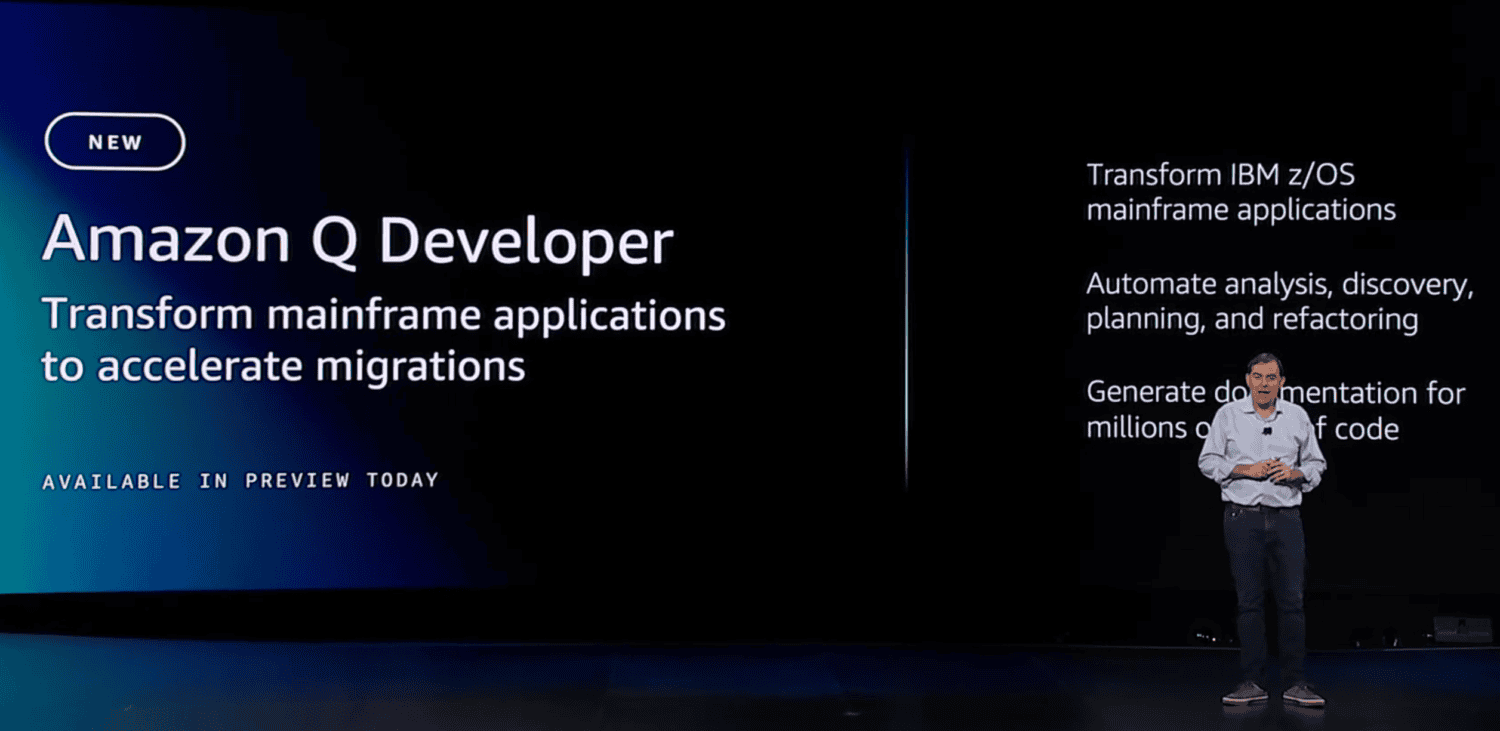
Using Amazon Q Developer, AWS can now take over much of this from organizations, starting with the best-known mainframes of all, namely the IBM z/OS mainframes. Among other things, Amazon Q agents can quickly generate documentation for COBOL code. In addition, they can help break monolithic applications into components that can then be ported to AWS.
Centrally available
The above new capabilities certainly sound interesting. Whether it will be enough to actually make organizations say goodbye to their on-premises data centers remains to be seen, of course. As indicated earlier, there are more reasons not to move to the public cloud with VMware workloads and mainframes than just the time, effort and money involved. The only one of the three that you could say is a no-brainer, as far as we are concerned, is the migration from .NET Framework to .NET on Linux. And even there, there are valid reasons not to do it.
It’s up to AWS to make sure that the new capabilities not only take as much work out of developers’ hands as possible, but also that it’s easy to start using them. AWS certainly hasn’t forgotten the latter either. It is making the new capabilities available in a new Amazon Q Developer web application. AWS has developed this application to provide good overview and insight into the often complex projects inherent in this type of change. It should be a central place to review plans and fine-tune them further and also keep track of the important moments of trajectories.
As to the new capabilities for VMware and mainframes, these are only available through this application. Migrating from .NET Framework to .NET on Linux can also be done by developers within their own IDE. All new features are in preview as of today.
Also read: What can Amazon’s AI chatbot Q do?
